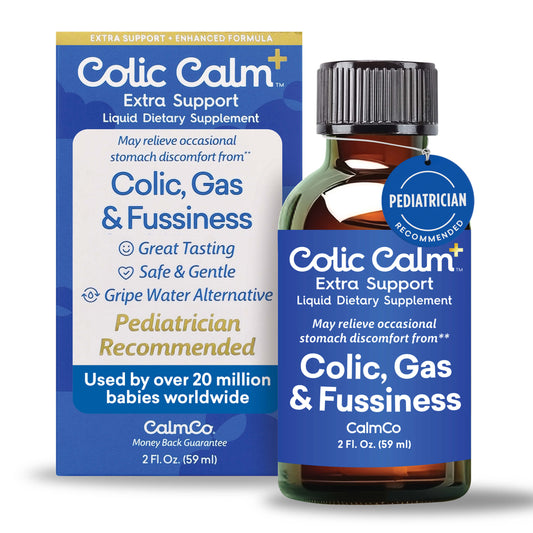Is it normal gastric reflux (GER) or the rarer, more serious condition GERD (Gastroesophageal Reflux Disease)? What is the difference between GER and GERD?
GER (Gastroesophageal Reflux, a.k.a.“reflux”) is simply defined as the backward flow of stomach contents into the esophagus (the tube that connects the mouth to the stomach). GER is a normal, common process that occurs from time to time in almost everyone of all ages, particularly after meals. It usually involves regurgitation. Almost all babies will regurgitate or “spit up” after some feedings, whether they are breast-fed or bottle-fed. The prevalence of GER peaks between 1 to 4 months of age,1 and usually resolves by 6 to 12 months.2 Regurgitation, or “spitting up”, has been reported in up to two-thirds (65%) of healthy infants,3 but decreases to 1% by one year of age. Babies with GER regurgitate without secondary signs or symptoms of inadequate weight gain, esophagitis, or respiratory disease. Infants with GER are thriving and represent the majority who see a physician with this condition.
In contrast, GERD (Gastroesophageal Reflux Disease) is a less common, more serious pathologic process that usually necessitates medical management and diagnostic evaluation. It is also referred to as “Pathogenic GER”. Approximately 1 in 300 infants will present signs and symptoms of GERD, and it is more common in children with neurological impairments.4 Patients with GERD may manifest persistent regurgitation, with typical complications such as inadequate growth, failure to thrive, feeding and oral aversions, esophagitis, etc., or atypical complications such as wheezing, pneumonia, chronic sinusitis, etc.5
What is “Silent GER or GERD”?
When no outward or typical symptoms occur, it could indicate that the refluxed material is not coming back all the way up the esophagus and into the mouth, but rather part way. Some children may swallow the refluxate back down, instead of spitting up or vomiting. This can be much more difficult to diagnose, since the typical symptoms cannot be seen. It can also be more damaging to the esophagus, as the acid not only comes up, but also goes back down. Whether or not the condition needs to be treated depends on the complications it may create.
What is Laryngopharyngeal Reflux?
When stomach acid makes its way all the way up through the upper esophageal sphincter (UES) and to the back of the throat, it can cause problems such as sore throat, hoarseness, chronic cough, etc. The throat and back of the nasal passages are especially delicate and sensitive.
What is “Secondary GER”?
In secondary GER, something else is occurring to cause episodes. One possibility is pyloric stenosis, in which there is a blockage of the pyloric sphincter. Other examples might be food allergies, metabolic disorders, infection, NG tubes, etc.
The Benefits of Breastfeeding
Breastfed babies have been shown to have fewer and less severe reflux episodes than their artificially fed counterparts. Human milk is more easily digested than formula and is emptied from the stomach twice as quickly. This is important since any delay in stomach emptying can aggravate reflux. The less time the milk spends in the stomach, the fewer opportunities for it to back up into the esophagus. Human milk may also be less irritating to the esophagus than artificial formulas.6
Another advantage of nursing the baby is the closeness between mother and baby. When your baby is in pain or unhappy, it is easy to become overwhelmed and stressed. Nursing is nature’s perfect way to comfort your baby, and the hormones produced when you breastfeed help promote relaxation, which goes a long way in helping you deal with a very fussy baby. Nursing keeps you in touch with your baby’s cues, and while you can’t always eliminate discomfort or unhappiness, the comforting that nursing provides, with the closeness and body contact that it involves, is unequaled. One common challenge that often arises when dealing with reflux is that baby may be hesitant to eat, knowing that pain may result afterwards. This can be terribly frustrating for both you and your hungry baby, and it can result in low weight gain.
Here are some techniques to encourage your baby to nurse:
- Minimize distractions and keep feedings as peaceful and calm as possible. Nurse in a quiet, dark room and play soothing music.
- Try nursing when baby is sleepy. Babies with reflux tend to wake more often, so take advantage of this opportunity to work in extra feedings. Keep baby close to you during the night.
- Give baby lots of skin-to-skin contact and cuddling. Try nursing him or her in a warm bath.
- Practice with different positions, and try nursing while standing and walking around. Baby slings are great for this, and they help keep the baby upright while your hands are free.
If your baby is generally happy and growing normally, any reflux is most likely GER, not GERD. You may want to try the following tips to minimize spitting up:
- Handle baby gently and burp often.
- Try to keep baby in an upright position during and after feedings. Nurse frequently. Smaller, more frequent feedings are easier to digest.
- If you have a large supply of breast milk, and your baby chokes or gags when the milk lets down, then spits up afterward, try offering only one breast per feeding. You may also try taking your baby off the breast when the milk first lets down, catching the forceful spray in a towel, then putting him back on the breast after the initial flow of milk has subsided.
- If your baby wants to nurse constantly, and seems to spit up after every feeding, try offering a pacifier. It may keep baby from overfilling his or her stomach and spitting up the excess. However, if your baby is not gaining weight properly and getting him or her to nurse is a struggle, your baby should spend all his sucking time at the breast.
- After feedings, try holding baby upright for a half hour or let baby lie upright on your chest. You could also use a front carrier or baby sling or place baby in a crib or infant seat at a gentle angle. A 45-degree incline would be ideal, since any more than that might actually put too much pressure on his or her stomach and make things worse.
- Try to identify foods or vitamins in the mother’s or baby’s diet that might be causing a reaction. Avoid foods that exacerbate reflux. Common culprits such as dairy, which are passed on to infant through breastfeeding, can cause allergies or sensitivities. Tomatoes, citrus, high-fat foods, carbonated beverages and processed foods are some other common acidic offenders. If you are not breastfeeding, speak with your doctor about experimenting with different formulas. Keeping a daily journal or log can also help determine reactions your child may be having.
- In the past, it was often recommended that mothers add cereal to thicken their baby’s feedings. The theory was that thicker food would have a harder time coming back up the esophagus. This method has not been shown to be effective and can interfere with breastfeeding. It can also cause more irritation to the baby’s esophagus if it is aspirated, and it is not commonly used today. “Too early introduction of solid foods interferes with breastfeeding by replacing human milk in the baby’s diet and decreasing the mother’s milk supply. It may also endanger the baby by making it possible for solids to be regurgitated, which are irritating to the body’s tissues and can be aspirated into the baby’s lungs. Solids also have the potential to trigger allergies in an already sensitive baby.” The Breastfeeding Answer Book, Mohrbacher, N., and Stock, J., 2003, La Leche League International.
- Many parents report promising results with a homeopathic medicine
called Colic Calm for controlling reflux and the accompanying discomfort. Many natural health care practitioners are recommending it to parents with babies suffering from GER. By all means, speak with your pediatrician and try this natural homeopathic remedy before resorting to prescription pharmaceuticals.
Experiment with these suggestions, because what works for one baby may not work for another. Work closely and communicate with your baby’s health care providers, since treatment can require trying different options until you find what works for your particular baby.
If these measures don’t work, the next step is to speak to your doctor about diagnostic evaluation and treatment options. Prescription medicines reduce stomach acid, thereby suppressing the symptoms of esophageal inflammation and pain associated with reflux. Commonly used medications include Zantac for babies (a brand of the H2 blocker – ranitidine) or Prevacid for babies (a brand of the proton pump inhibitor – lansoprazole). However, since acid-blocking drugs interfere with the body’s natural digestive process, important nutrients such as iron, calcium and folic acid are not absorbed well. Given the formative stage of baby’s development, this could be one of several undesirable side effects. Because stomach acid also forms part of the body’s immune system by killing undesirable bacteria in the gut, these drugs make baby more susceptible to stomach infections. Surgery is a last resort, and it is reserved for severe cases with dangerous complications, and only after all other treatment has failed. A natural option is gripe water for reflux such as Colic Calm that does not expose baby to such side effects is usually preferable to drugs or surgery.
Be sure that you have lots of support and help for you and your family while you are dealing with all the extra stress. Ask for help! Let someone bring you meals or take your older kids for a while. A great support group for parents dealing with reflux is PAGER (Pediatric/Adolescent Gastroesophageal Reflux Association). PAGER is a national organization that provides information and support to families who have children with this condition. They have brochures, hold monthly meetings, and publish a monthly newsletter.
If your baby has reflux, try to keep a positive attitude, and remember that in almost all cases, spitting up and GER occurs in healthy babies who just need a little more time to grow. Before you know it, your fussy baby will be a teenager with a driver’s license, and then you’ll really have something to worry about!
* Disclaimer: The information available on this website should not be used as a substitute for professional medical care for the prevention, diagnosis, or treatment of your child’s reflux. Please consult with your child’s doctor or pharmacist before trying any medication (prescription or OTC) or following any treatment plan mentioned. This information is provided only to help you be as informed as possible about your child’s condition.





